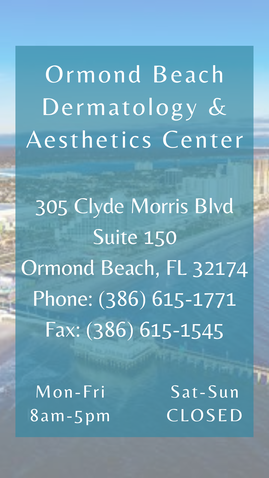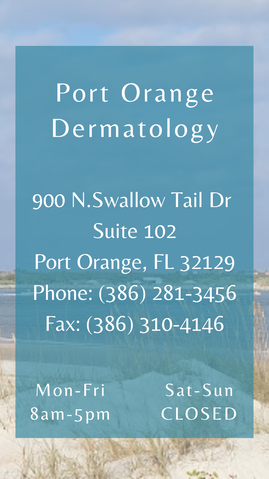MOHS SURGERY
What is Mohs surgery?
Mohs (pronounced "Moes") surgery, named after Dr. Frederick Mohs, also called Mohs micrographic surgery, is a specialized treatment for removing certain skin cancers. It is the only treatment that allows for complete evaluation of the margins (areas surrounding the visible skin cancer) while you wait in the medical office.
Mohs surgery ensures that all skin cancer cells have been removed before you leave the office. This way, the least amount of healthy tissue is removed. This is especially important when skin cancer develops in a sensitive area such as around the eyes, nose or lips.
Who does Mohs surgery?
Our doctors Gina Sevigny, MD and Paul Graham, DO perform Mohs surgery at our Ormond Beach Dermatology location. They are both board-certified in micrographic dermatologic surgery. They are also trained in reconstructive techniques to minimize scarring. They perform the surgery as well as examine the removed tissue under a microscope to ensure all cancer cells have been removed.
How is Mohs surgery performed?
Mohs surgery is performed as an outpatient procedure in our Ormond Beach office. You remain awake during surgery and receive a local anesthetic to numb the surgical area.
Once the area has been numbed, the doctor removes the visible skin cancer and a thin layer of surrounding skin. Then your skin is bandaged so that you can wait comfortably. While you wait, the removed tissue is examined under a microscope to determine if any cancer cells remain at the edges of the removed tissue. This process is called a stage.
If cancer cells are present at any edge of the removed tissue, they will remove another thin layer of skin and examine it under the microscope. This process is repeated until all cancer cells have been removed. It may take only one stage to remove all of the skin cancer, or it could take several stages. You may need stitches, or your wound may be bandaged and allowed to heal on it’s own.
Each stage can take 1-2 hours. We recommend bringing a snack and something to entertain yourself, such as a book or tablet.
When is Mohs surgery recommended?
Mohs surgery is usually recommended for basal cell carcinoma (BCC) or squamous cell carcinoma (SCC) that appears in a sensitive area, such as the face, ear, hand or foot, or if the lesion is aggressive or large. Dermatologists recommend it because it preserves as much healthy tissue as possible, and it has a high cure rate.
Mohs (pronounced "Moes") surgery, named after Dr. Frederick Mohs, also called Mohs micrographic surgery, is a specialized treatment for removing certain skin cancers. It is the only treatment that allows for complete evaluation of the margins (areas surrounding the visible skin cancer) while you wait in the medical office.
Mohs surgery ensures that all skin cancer cells have been removed before you leave the office. This way, the least amount of healthy tissue is removed. This is especially important when skin cancer develops in a sensitive area such as around the eyes, nose or lips.
Who does Mohs surgery?
Our doctors Gina Sevigny, MD and Paul Graham, DO perform Mohs surgery at our Ormond Beach Dermatology location. They are both board-certified in micrographic dermatologic surgery. They are also trained in reconstructive techniques to minimize scarring. They perform the surgery as well as examine the removed tissue under a microscope to ensure all cancer cells have been removed.
How is Mohs surgery performed?
Mohs surgery is performed as an outpatient procedure in our Ormond Beach office. You remain awake during surgery and receive a local anesthetic to numb the surgical area.
Once the area has been numbed, the doctor removes the visible skin cancer and a thin layer of surrounding skin. Then your skin is bandaged so that you can wait comfortably. While you wait, the removed tissue is examined under a microscope to determine if any cancer cells remain at the edges of the removed tissue. This process is called a stage.
If cancer cells are present at any edge of the removed tissue, they will remove another thin layer of skin and examine it under the microscope. This process is repeated until all cancer cells have been removed. It may take only one stage to remove all of the skin cancer, or it could take several stages. You may need stitches, or your wound may be bandaged and allowed to heal on it’s own.
Each stage can take 1-2 hours. We recommend bringing a snack and something to entertain yourself, such as a book or tablet.
When is Mohs surgery recommended?
Mohs surgery is usually recommended for basal cell carcinoma (BCC) or squamous cell carcinoma (SCC) that appears in a sensitive area, such as the face, ear, hand or foot, or if the lesion is aggressive or large. Dermatologists recommend it because it preserves as much healthy tissue as possible, and it has a high cure rate.


